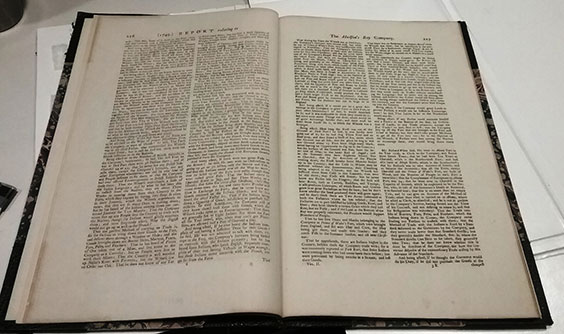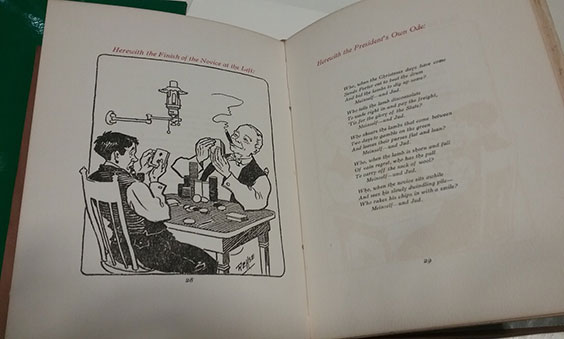Why Being a Custodian Is Like Being Batman
I used to think being a custodian was just a matter of mastering the skills typical of janitorial work, occasionally managing the unexpected, and having some ability to empathize with people. But it isn’t. Custodians must constantly grapple with the challenges that come with any job: ensuring we have the resources we need to do our jobs, managing time, and dealing with changing circumstances, incomplete information, organizational culture, and our own shortcomings.
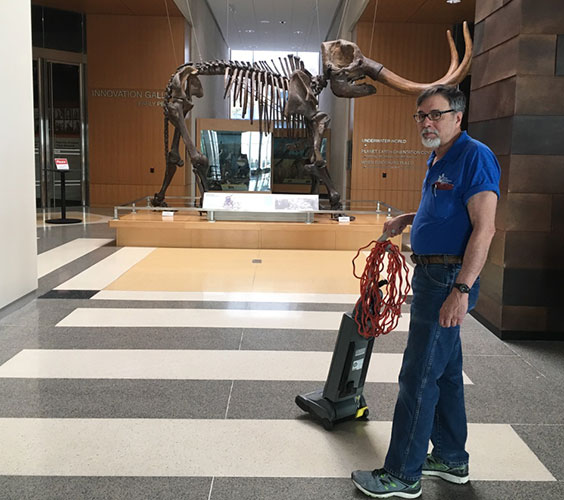
Custodian Bob Canter starting the evening shift at the North Dakota Heritage Center & State Museum.
Business innovator Nilofer Merchant wrote, “Culture is a set of habits that allows a group to cooperate by assumption rather than by negotiation.” When visitors enter the awe-inspiring North Dakota Heritage Center & State Museum, they assume safety, and they assume cleanliness. It is the custodian’s mission to ensure— through diligence, awareness, initiative, and responsibility — that those expectations are met.
As you might imagine, Heritage Center custodians clean and maintain public spaces like the museum galleries, restrooms, and event spaces. But we also clean and maintain the non-public areas in the lower level of the building: workshops, laboratories, offices, and special project rooms. So there is quite a variety of skills involved. On one shift, while cleaning the usual cubicles, restrooms, offices, and employee lounge, I may also oil a squeaky door hinge, or discover, report, and mitigate a leak in a mechanical room. On tomorrow’s shift I may replace the brush bearings on a floor scrubbing machine.
Our duties fall under three larger, overarching objectives: first, protect the safety of the visitors and employees; second, protect the building itself; and third, assure visitor and employee comfort, enjoyment, and satisfaction. Custodians, in our continuous process of constructing a clean and safe environment, are often invisible to our building’s users. We are behind the scenes; out of sight and out of mind. In short, my role is a little like Batman (if Batman also had the talents of his butler, Alfred): Protect people. Protect the building. Assure comfort.
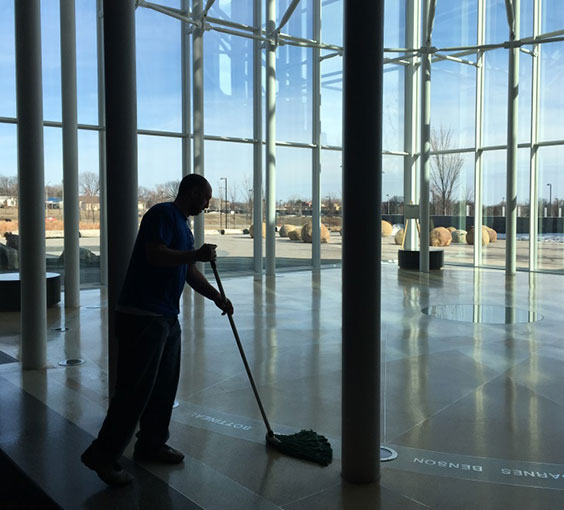
Custodian Josh Masser mopping the terrazzo floor of the Northern Lights Atrium and front entrance at the end of the day.
Examples of safety include sanitation of restrooms and “touch surfaces” like door handles, countertops, glass cases, and water fountains. Other safety watch-outs are slip hazards from leaks and spills. Gallery carpet tiles can loosen from their adhesive during exhibit changes and become a trip hazard. I can’t be there to swoop in like Batman and catch the child who trips on a loose carpet tile, but I can prevent the accident from happening in the first place.
Building protection involves watching for and reporting leaks and stains, a loosened door plate, a failing window seal. Are we custodians using appropriate products for buildings surfaces? Are we keeping three-year-old humans from climbing on the 13,000-year-old mastodon?
The National Association for Interpretation, a professional organization for museums and historical sites, says, “Cleanliness is a cardinal principle — people will remember dirty bathrooms more than anything else.” I agree that cleanliness is closely tied to enjoyment of a public space. I think it engenders a feeling of safety and comfort (even if subconsciously) among our visitors and employees. It sends a signal that here, in this place, someone cares.
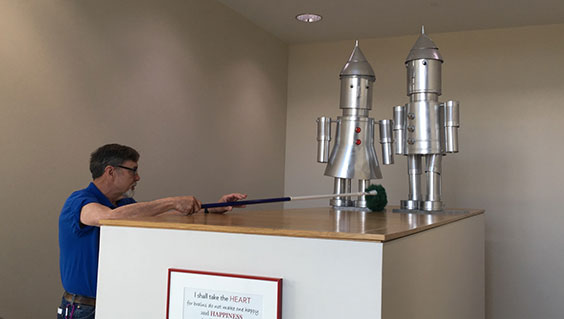
Bob dusting the tin sculptures displayed near the James River Café.
Hospitality in ancient cultures involved welcoming the stranger and offering him food, shelter, and safety —the hospitality for which the Mandan villages were famous. My approach to custodial work is through a lens of goodwill.


